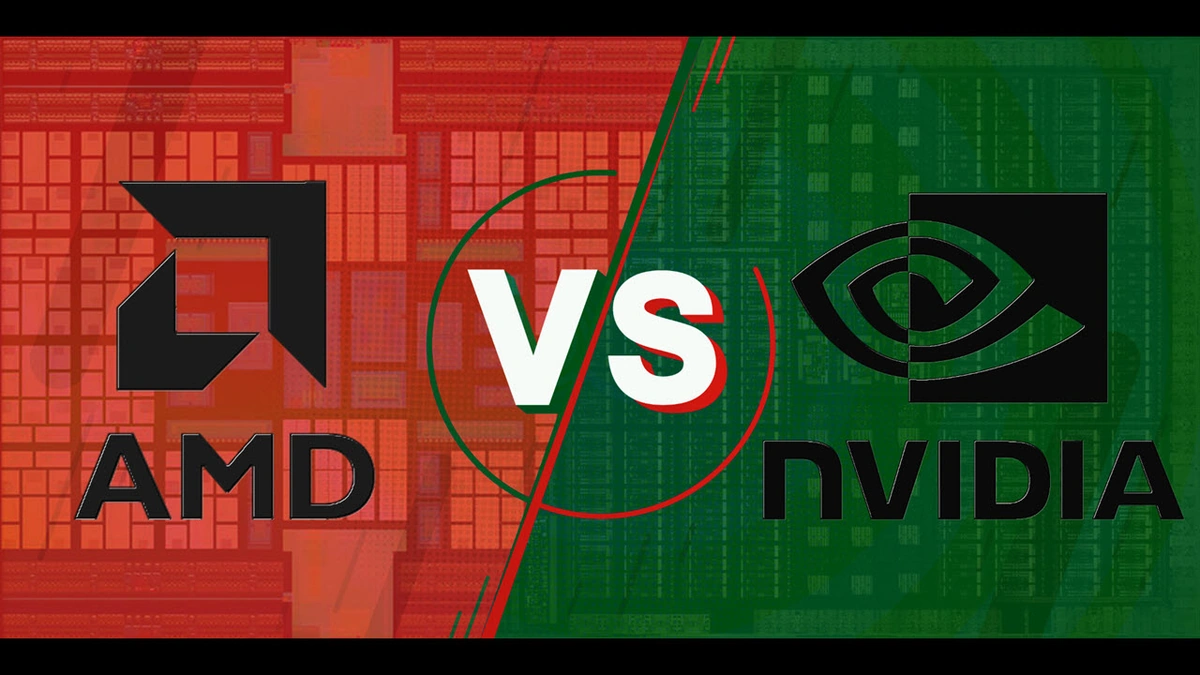Let’s be honest, the tech world loves a good rivalry. Coke vs. Pepsi, Apple vs. Android, and, of course, AMD vs Nvidia . But is this really a fair fight? For years, Nvidia has seemed to hold the high ground, especially when it comes to high-end graphics cards. But things are changing, and that’s why this is more than just a specs comparison. We’re talking about potential shifts in market share, technological innovation, and, ultimately, what’s best for you, the consumer. And trust me, I’ve been following this battle for years, and the current landscape is particularly fascinating.
The Lay of the Land | Where Each Company Stands

So, where does each company currently stand? Nvidia, undoubtedly, holds a significant lead in the discrete GPU market. Their RTX series has become synonymous with ray tracing and high-performance gaming. Their deep learning tech is in everything from self-driving cars to medical imaging. Wikipedia has a great summary of the history of Nvidia if you’re interested in their trajectory. They have a very strong software ecosystem with CUDA which gives them a competitive advantage.
AMD, on the other hand, has been playing catch-up. But here’s the thing: they’ve been playing smart catch-up. With their Ryzen CPUs, they’ve already proven they can go toe-to-toe with Intel in the processor market. Now, with their Radeon GPUs, they’re aiming to do the same to Nvidia. They’ve been making strides in price-to-performance and focusing on technologies like FidelityFX Super Resolution (FSR) – a direct competitor to Nvidia’s DLSS.
AMD’s Growth Strategy | Playing the Long Game
AMD isn’t trying to win every single benchmark. Instead, they’re focusing on a broader strategy. One key area is their collaboration with console manufacturers. The Xbox Series X and PlayStation 5 both use AMD chips, giving them a huge volume boost and valuable engineering insights. What’s so interesting is, the technology developed here will naturally find its way into the PC space. And I think that’s smart.
Another part of their strategy? Open-source initiatives. AMD is heavily invested in open-source software and drivers, making their GPUs more appealing to developers and researchers. This can lead to wider adoption in fields like AI and machine learning, where Nvidia currently dominates. This can really open the door to new growth opportunities for the company.
But, let’s be honest, their marketing budget isn’t as huge as Nvidia’s, so they really have to play the underdog card well.
Nvidia’s Response | Innovation and Ecosystem Lock-in
Nvidia isn’t sitting still, of course. They continue to push the boundaries of GPU technology with each new generation. Ray tracing, DLSS, and their powerful CUDA platform are all significant advantages. They’re also expanding into new markets like data centers and cloud gaming.
And here’s the thing about Nvidia: they’ve built a really strong ecosystem. Developers are used to working with CUDA, and many software applications are optimized for Nvidia GPUs. This creates a significant barrier to entry for AMD, even if their hardware is technically superior in some areas. The latest rumors even suggest a new flagship RTX 5000 series launching soon. They’re really pushing for high-performance gaming .
But – and this is a big but – all that tech comes at a price. Nvidia cards often cost more than comparable AMD cards, especially at the high end. And in a world of budget-conscious gamers and creators, that price difference matters. Internal Link Example 1
The Future Landscape | A More Level Playing Field?
So, can AMD really challenge Nvidia’s dominance? I think the answer is a qualified yes. AMD has the potential to gain market share, especially in the mid-range and budget segments. Their focus on price-to-performance and open-source technologies gives them a competitive edge.
However, Nvidia’s technological lead and strong ecosystem will be difficult to overcome completely. They are expanding into data centers as well to have a broader range of consumers. Ultimately, the future of the AMD vs Nvidia rivalry will depend on a combination of factors: technological innovation, pricing strategies, and the ability to build strong software ecosystems. It all boils down to who can better cater to the evolving needs of gamers, creators, and researchers. And the next few years will be critical.
And let me rephrase that for clarity: I initially thought it would be a long time before AMD really got close. But now, with the new console chips and renewed focus, I think they are closer than ever before. Check out more details on what AMD has to offer on their official website.
One common mistake I see people make is only focusing on the benchmarks. Benchmarks are important, sure, but they don’t tell the whole story. Consider your specific needs and budget when choosing a graphics card. After all, what matters most is that you get the best possible experience for your money. Internal Link Example 2
FAQ Section
Frequently Asked Questions
What are the key differences between AMD and Nvidia GPUs?
AMD generally offers better price-to-performance, while Nvidia excels in high-end performance and features like ray tracing and DLSS.
Which is better for gaming, AMD or Nvidia?
It depends on your budget and the games you play. Both offer excellent gaming experiences, but Nvidia often holds an edge in high-end titles.
What is FidelityFX Super Resolution (FSR)?
FSR is AMD’s upscaling technology, designed to boost frame rates in games with minimal image quality loss.
Is AMD a good alternative to Nvidia?
Yes! AMD is a very good alternative to Nvidia.
Which company has the better CPU?
AMD generally has a lead in CPU market share with their Ryzen series.




